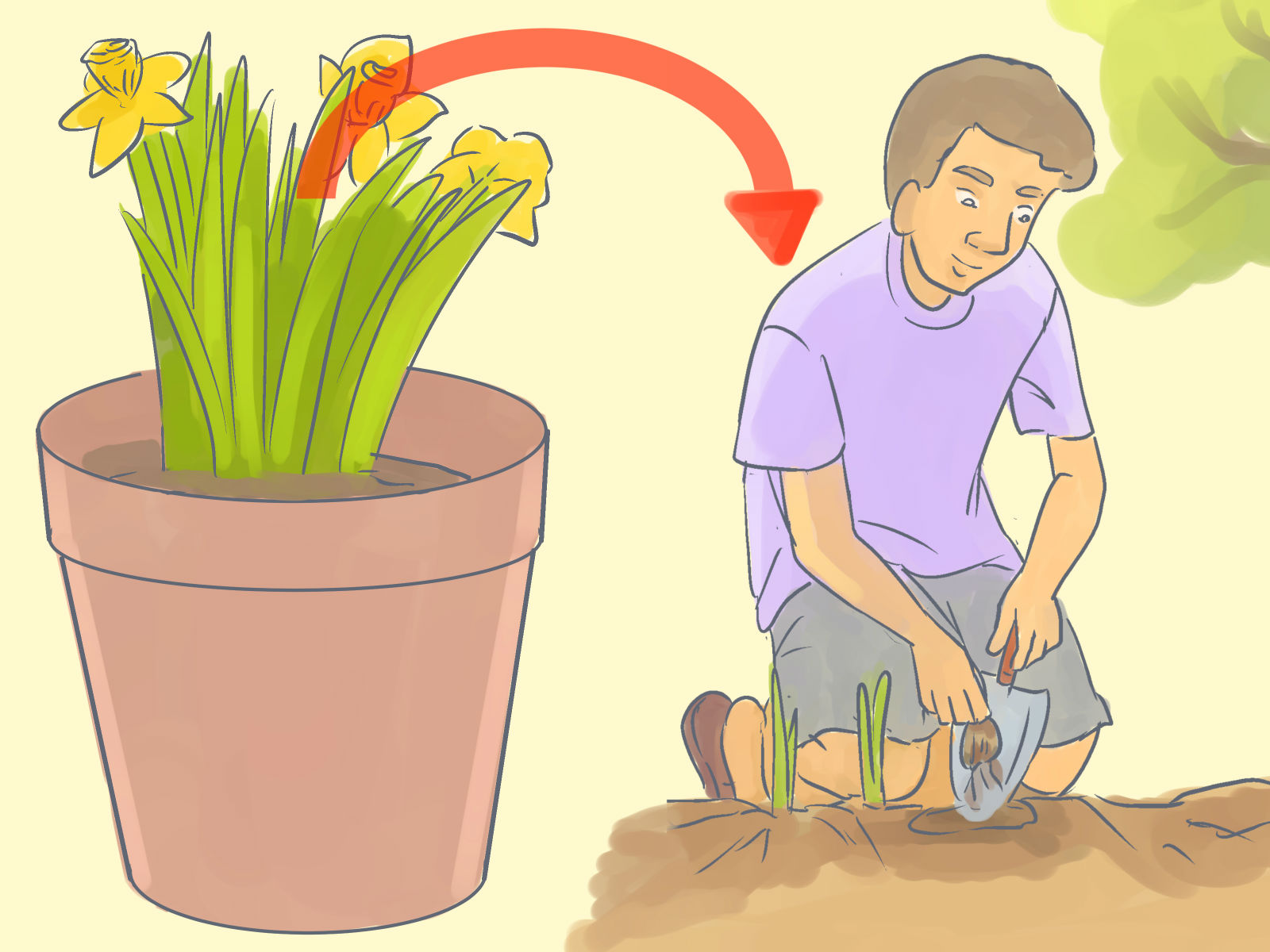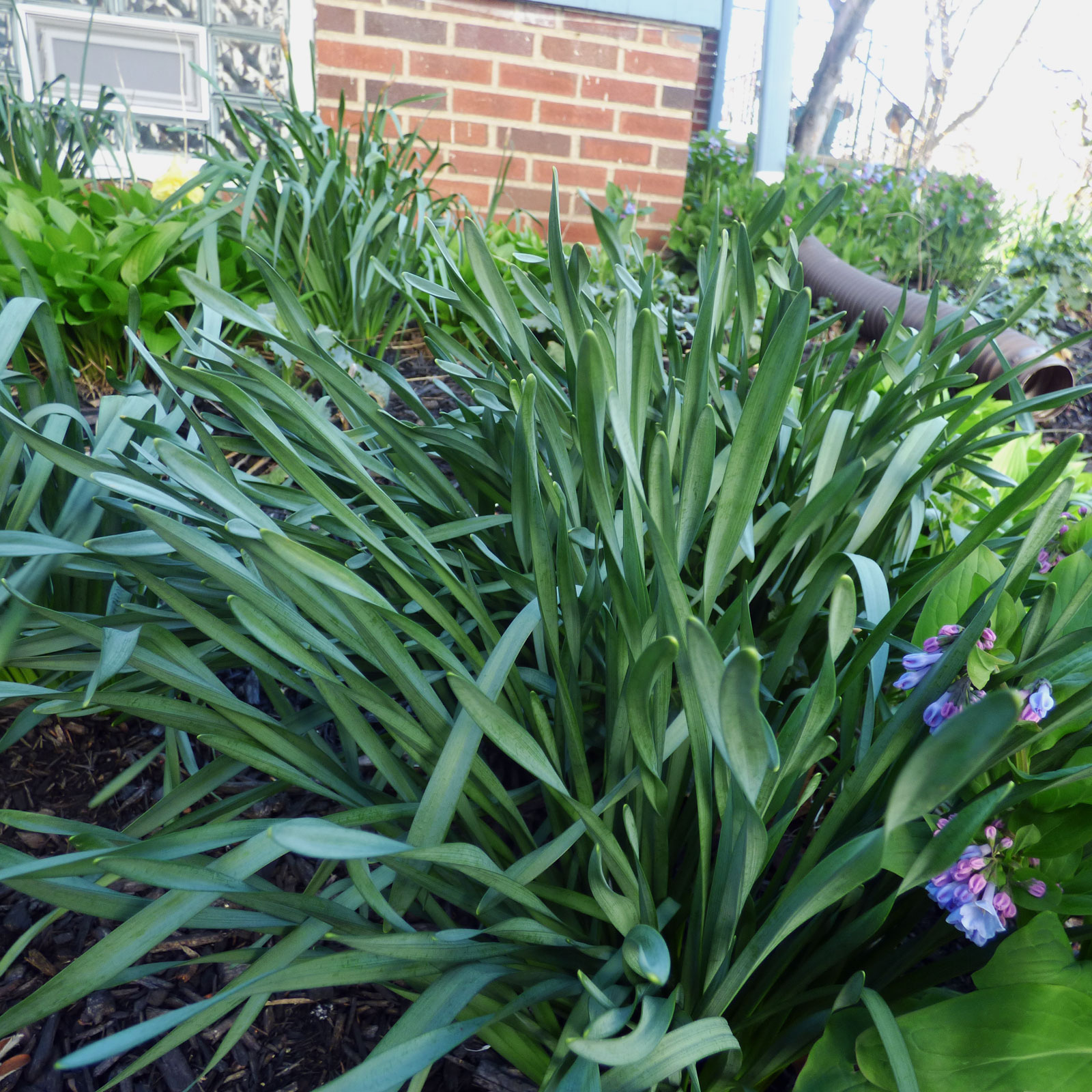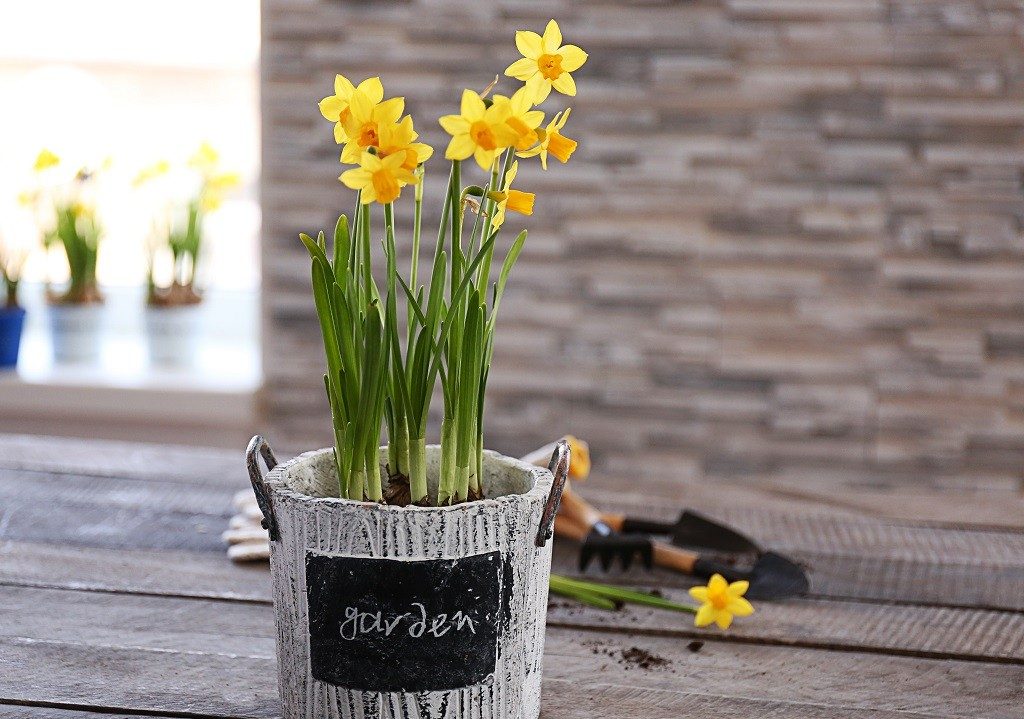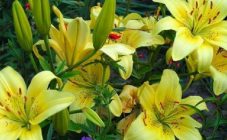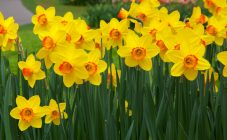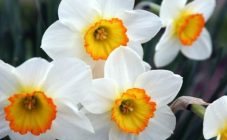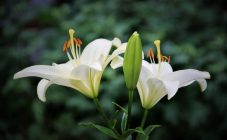Content:
With the passing of winter, one of the first to begin to bloom, transform flower beds and delight daffodils with spring flowering. These are delightful delicate flowers with a yellow heart and milky white or sunny yellow petals. However, in the end, their flowering ends. And soon after wilting, it is worth considering when to transplant daffodils after flowering.
Dates and duration of flowering daffodils
The specific flowering period of daffodils is difficult to name. It depends on the variety and climatic zone in which the plant grows.
In regions with harsh temperature conditions, flowers will appear a little later than the period established for the variety, while in the southern territories, due to the warm climate, daffodils may bloom earlier.
The approximate timing of the first flowering in a street garden is presented below:
- The earliest subspecies of daffodils bloom in late March and early April. This is Thalia, Crackington.
- At the end of April, Mount Hood, Ice King, Rosie Cloud, Spelbinder will delight you with the beauty of their flowers.
- In early May, flower beds will be decorated with Pink Champagne, Pink daffodil, Tet-a-tete.
- Among May, the Precaucus, Yellow and Poetic Narcissus, Gay Challenger will take over.
Duration of flowering daffodils from 10 to 21 days. This indicator also depends on the variety. In any case, by the end of June, as a rule, there are no blooming daffodils left.
What to do after daffodils have faded
Having wilted, the plant continues to grow in the flowerbed, stocking up on nutrients necessary for overwintering. Leaves are a conductor of sunlight, which feeds the plant with the necessary energy accumulated for the winter. It is not worth pruning foliage for another 60-90 days after flowering - it should dry out on its own or acquire a brown tint.
With the arrival of autumn, you need to feed. To do this, it is worth purchasing soluble fertilizers and using them according to the instructions (for example, Terrasol Lux, Meister-Agro, Fertika, Dobraya sila).
After the leaves have dried up, the bulb does not enter a dormant period; it continues to breathe and feed. Therefore, after digging the onions, you should not store them for longer than 60 days, during this time you should plant them.
Why do daffodils need a transplant after flowering?
Transplanting daffodils after flowering is carried out so that they continue to bloom profusely and densely. An annual transplant is not required. Because of this, the plant weakens, it will not bloom for a couple of years after planting.
For reproduction purposes, by dividing the bulb nests, the transplant should be done every 2-3 years, when the main bulb forms shoots - children. Various subspecies of a flower form from 2 to 5 babies in one season.
A significant decrease in the number of flowering shoots, a decrease in the size of inflorescences, insect raids, infection with diseases are signs that signal that daffodils need a transplant.
When to start planting after flowering
When the foliage is dry, it is worth:
- Dig up the bulbs and trim the foliage.
- Remove adhering lumps of dirt.
- Place them in a shaded area to dry.
- After that, sort through, sort out the damaged, rotten, infected specimens.
- When the planting material is completely dry, you need to cut the roots and separate the babies from the mother's bulb.
- Further, daffodil bulbs should be stored in a dark, damp place (a basement or cellar is an excellent choice).
After placing the planting material for storage, you should provide access to fresh air, and also regularly check for rotten bulbs. If found, they should be immediately thrown away and examined for contamination in neighboring specimens that have come into contact with damaged ones.
The most suitable period for planting bulbs is late August - early September. In any case, planting should be done a month before the first frost so that the seedlings have time to take root and do not suffer from low temperatures.
If it was not possible to meet the deadlines, the planting site should be mulched with dry fallen leaves or sawdust with a layer of about 10-15 cm.
Daffodil planting procedure
Before planting, in order to avoid rot, the bulbs should be treated with a weak solution of potassium permanganate (potassium permanganate) slightly pink in color. To protect against the attacks of pests and worms, you need to use Karbofos for processing. To do this, dilute 1 ml of the drug in a liter of water and soak the planting material for 30-40 minutes. After this treatment, the daffodil bulbs must be thoroughly dried.
It is better to choose a new, rested territory for landing. It is better to refrain from sowing in the same place. Over the years, the soil has depleted, the shoots will grow worse - such a transplant will not lead to anything good. Remember that daffodils prefer a sunny or slightly shaded area.
The size of the hole is measured with the longest bulb itself. On average, its depth should be about 20 cm. The bottom is sprinkled with sand (for drainage), humus and 1 tbsp. spoon of mineral dressing. The onion is placed in the hole with the bottom down, sprinkled on top with a layer of soil, slightly compacted with pressing movements.
Each instance should be planted at a distance of 10-15 cm from the previous one. After that, the ground should be leveled so that rain and melt water does not accumulate in depressions and irregularities. Water with plenty of liquid, especially in dry weather.
Tips and tricks from experienced florists
Experts recommend:
- Landing at a ground cover temperature of 8-10 ° C.
- Prepare the soil in advance. In heavy clay soil, add a mixture of litter peat with sand. Too acidic soil should be limed with bone meal, chalk or lime.
- Untimely extraction of bulbs from the ground and poor drying are prerequisites for the appearance of diseases.
- If the planted material was covered for the winter, then after the snow melts, the shelter must be removed immediately, leaving a small layer of mulch about 5 cm thick.
- Not only the bulbs are poisonous in the plant, but also the foliage, which contains the poisonous alkaloid lycarin. Therefore, these flowers should be handled with increased accuracy, all garden work should be carried out in rubber gloves.
- You can plant the bulbs not only in open ground, but also in pots.
It is impossible to imagine spring without these dazzling white or bright yellow flowers blooming. They mark the end of the cold season and the arrival of warmth.But in order for this perennial plant from the amaryllis family to please with its flowering from year to year, you should know about the basic rules of agricultural technology.
